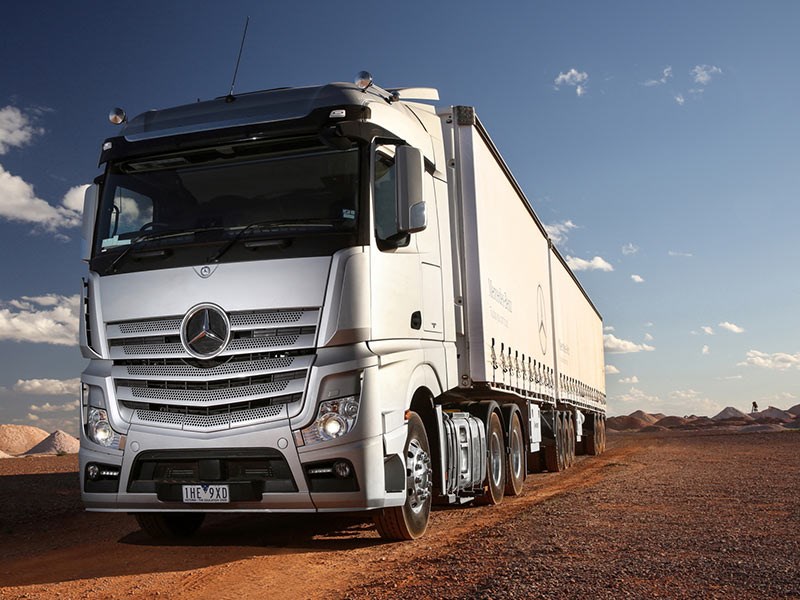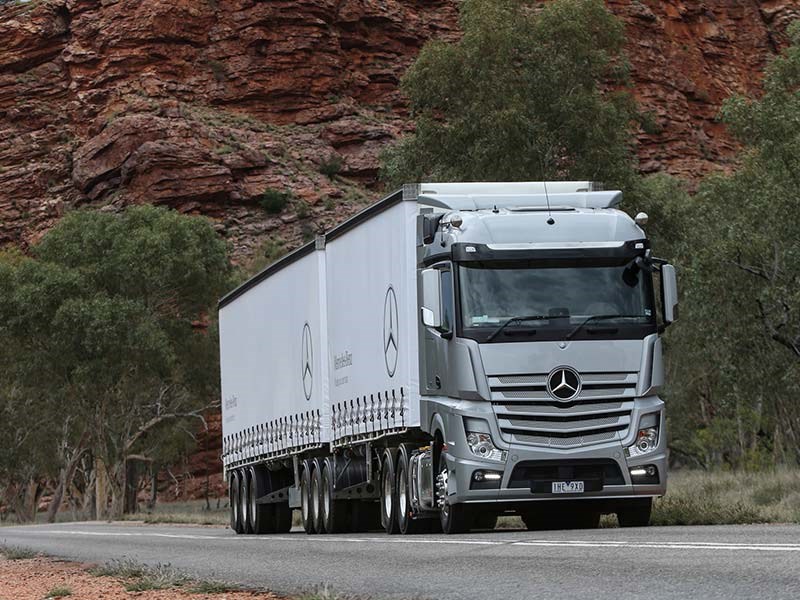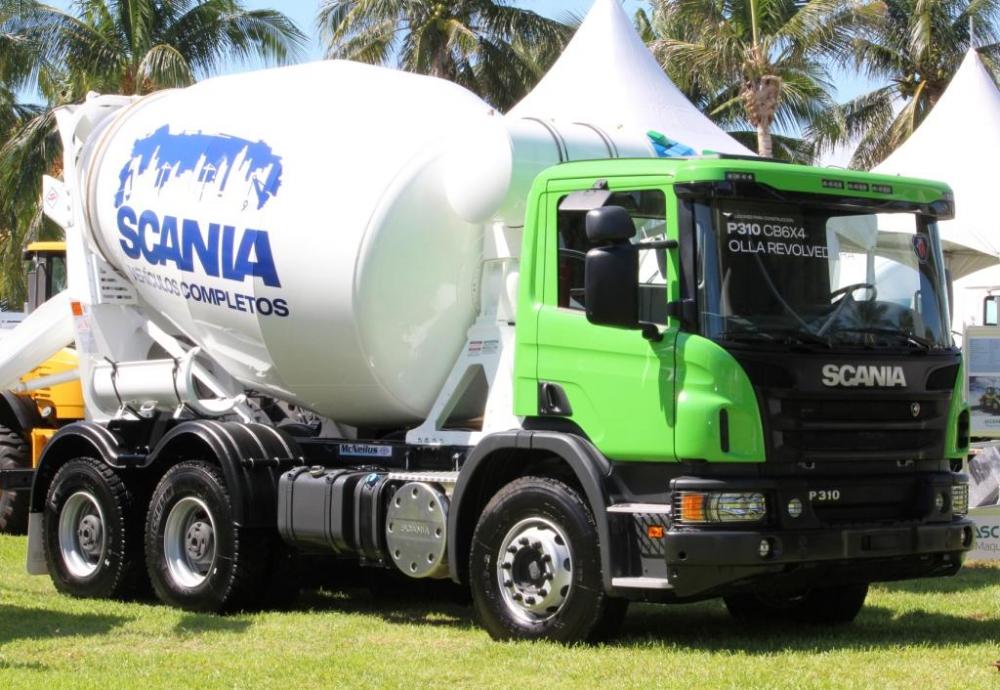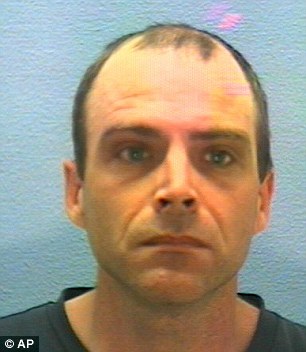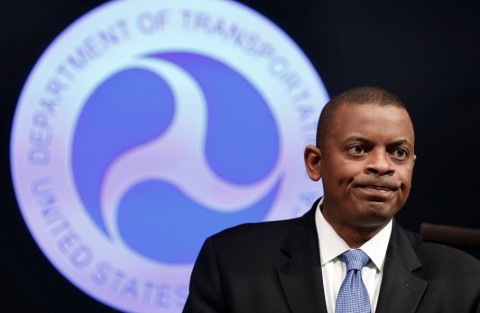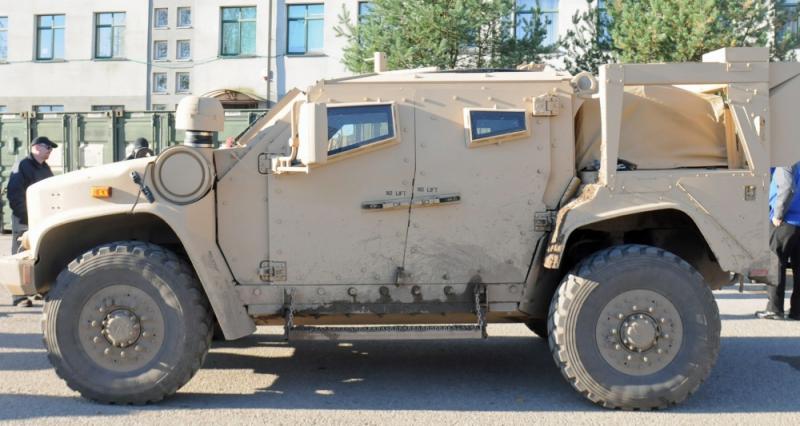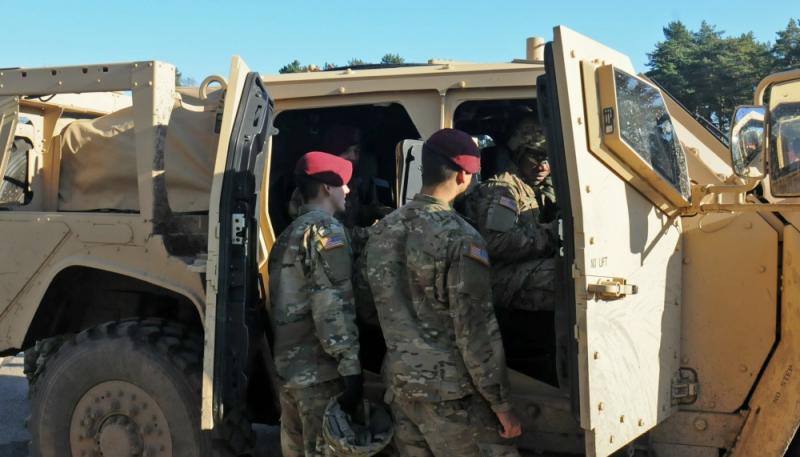
kscarbel2
Moderator-
Posts
18,886 -
Joined
-
Days Won
114
Content Type
Profiles
Forums
Gallery
Events
Blogs
BMT Wiki
Collections
Store
Everything posted by kscarbel2
-
Draconian actions – 1st Amendment thrown to the curb
kscarbel2 replied to kscarbel2's topic in Odds and Ends
"the Skagit County sheriff’s report noted that Grayzel and her cinematographer were “just outside the enclosure … taking photographs and video”. The report said they confiscated the film-makers’ phone and “assorted camera equipment”, actions that have raised further concerns about press intimidation and free speech violations." What "I" am reading here is, two journalist who were not trespassing, but rather were standing "outside" the enclosure, were arrested and their equipment confiscated. Based on that, I'm seeing Freedom of the Press thrown to the curb. On any given day, you only see a fraction of the actual news. Do you think for one moment that only Russia, China and other global countries try to keep certain news from reaching the masses? News that would complicate their plans. This is an example of how that takes place right here. -
Draconian actions – 1st Amendment thrown to the curb
kscarbel2 replied to kscarbel2's topic in Odds and Ends
Absolutely right Paul. Few keep it in mind so it needs to be said from time to time, it was a different time and place, with different attitudes. But suffice to say, the native American Indians got a raw deal. -
BBC / October 21, 2016 US State Department spokesman John Kirby said the US was "baffled by this rhetoric" and that Assistant Secretary of State Daniel Russel would be in Manila this weekend and would try to get some answers. "We are going to be seeking an explanation of exactly what the president meant when he talked about separation from the US," Mr Kirby told reporters. ---------------------------------------------------------------------------------------------------------------------------------------- Apparently, some of our State Department folks have lost their command of the English language. Duterte's statement was perfectly clear to me. I suggest we respond to it in kind.
-
Test Drive: New Mercedes-Benz Actros Struts its Stuff
kscarbel2 replied to kscarbel2's topic in Trucking News
New Mercedes-Benz Actros launched in Australia Prime Mover Magazine / October 20, 2016 Five years after the official European launch, Mercedes-Benz has now rolled out the new Actros heavy-duty model in Australia. The company’s new flagship model was presented to more than 250 key customers, dealers and the media at a launch event in Northern Queensland this week. As reported in Prime Mover magazine, the new model had to undergo a lengthy 18-month evaluation program before Mercedes-Benz Truck and Bus Australia found it fit for the demanding Australian on-road market. The test reportedly involved some 35 customers and 20 trucks covering more than one million kilometers in preparation for the official unveiling – with one trial vehicle clocking up more than 400,000km alone. “The feedback from our evaluation program indicates our key customers are very impressed by the trucks we have developed for our market and many have already placed orders,” commented Mercedes-Benz’ Sales Manager, Andrew Assimo. According to Assimo, driver comfort will be a key selling point for the new model, which targets “key mainstream applications” during the first stage of the roll-out. “[Our launch] models focus on metro, regional, B-double and road train work,” he said. “We will introduce rigid models in the second quarter of 2017, while all-wheel drive models will follow later that year.” Key updates include locally sourced inner-spring mattresses for increased comfort, long range fuel tanks and a 6.1-inch touch screen truck sat-nav unit and sound system. Arguably the biggest change for local customers has occurred in the engine department, though. The V8 and V6 engines that have powered the Actros for more than a decade have been replaced with new 11-litre, 13-litre and 16-litre six-cylinder engines designed around the Daimler platform that shares its DNA with the current Detroit Diesel. Steel rather than alloy pistons are used to reduce friction and extend engine life. What’s more, Mercedes-Benz in-house asymmetrical turbochargers are able to maintain the same pressure at the turbine wheels throughout the rev range. Various ratings are available, including a 13-litre version rated at 530hp and a 16-litre one with 580 or 630hp. Mercedes-Benz is promising fuel economy improvements of up to seven per cent over the previous engine range, with AdBlue consumption down 40 per cent despite the engines all complying with Euro VI emission standards. Also on board will be Daimler’s third generation Powershift Automated Manual Transmission, which is expected to deliver up to 20 per cent quicker shifts than before. In Europe, Mercedes-Benz has already sold more than 200,000 units of the next generation truck and customers have already covered an estimated 12 billion kilometers – indicating just how high the hopes are for the new Actros in Australia. And according to Mercedes-Benz, early signs are promising, as two of the trucks that were part of this week’s launch found new owners on the spot – with a black unit going to Shane Blakeborough of SBL Logistics in Geelong, which was involved in the evaluation process. -
Test Drive: New Mercedes-Benz Actros Struts its Stuff
kscarbel2 replied to kscarbel2's topic in Trucking News
New Actros launched by Benz in Australia Trade Trucks AU / October 21, 2016 Mercedes-Benz has officially launched its new Actros model in Australia at an event in northern Queensland. Unveiled to an audience of 260 customers, dealers and media, the new Actros hits the market on the back of an 18-month local trial involving 20 trucks, 1 million kms and 35 customers. "We are excited to introduce the next generation Mercedes-Benz truck to our key Australian customers," Mercedes-Benz Truck and Bus director Michael May says. "They have helped us put together a fantastic line up of trucks that will deliver new standards of efficiency, reliability and comfort." Available in four engine variants ranging from 11-litre and 13-litre options to a 16-litre powerhouse, the Benz will suit metro, regional, B-double and road train work. Originally launched five years ago in Europe, the Actros collected the 2012 International Truck of the Year for its in-line six-cylinder engine, fuel savings, AdBlue consumption reduction, safety improvements and automated transmission. The new model arriving in Australia also includes modern technology advances such as Proximity Control Assist adaptive cruise control with stop/start function, Active Brake Assist, and a 6.1-inch touch screen truck sat-nav unit and sound system. Mercedes-Benz says it has already received strong interest in the new truck and is offering a 500,000km/5 year’s free scheduled servicing offering on all new Actros prime movers. The new models will be followed in mid-2017 with rigid variants and all-wheel drive versions slightly after that. . -
Volvo Group – 2016 3rd Quarter Earnings Report
kscarbel2 replied to kscarbel2's topic in Trucking News
Truck maker Volvo's sales slip across most markets MarketWatch / October 21, 2016 Swedish truck maker Volvo AB posted a 15% decline in third-quarter net profit on Friday due to lower truck sales in all its markets except Europe. Volvo said net profit for the three months to Aug. 31 totaled 2.59 billion Swedish kronor ($290 million), compared with SEK3.07 billion in the same period last year. Revenue for the period ending Sept. 30 fell 6% to SEK68.76 billion from SEK73.31 billion last year. Analysts polled by FactSet had expected revenue of SEK69.6 billion and net profit of SEK3.09 billion. Volvo said its truck business, which accounts for about two-thirds of total sales, decreased by 13%. Chief Executive Martin Lundstedt said further steps will be taken to adjust production volumes downwards in North America. "The downward correction in the North American market continued and there is still a need to take down dealer inventories," Mr. Lundstedt said. -
Volvo Group – 2016 3rd Quarter Earnings Report
kscarbel2 replied to kscarbel2's topic in Trucking News
Renault Trucks’ global sales results.....versus the Volvo brand: January 2015 Renault up 24% Volvo down 4% February 2015 Renault up 26% Volvo down 13% 1st quarter 2015 Renault up 35% Volvo down 8% April 2015 Renault up 12% Volvo up 9% May 2015 Renault up 5% Volvo down 1% 2nd quarter 2015 Renault up 7% Volvo down 4% July 2015 Renault up 8% Volvo down 5% August 2015 Renault up 60% Volvo down 6% 3rd quarter 2015 Renault up 20% Volvo down 2% October 2015 Renault up 16% Volvo down 1% November 2015 Renault up 54% Volvo down 10% 4th quarter 2015 Renault up 29% Volvo down 7% Full Year 2015 Renault up 22% Volvo down 4% 1st quarter 2016 Renault up 8% Volvo down 8% 2nd quarter 2016 Renault up 12% Volvo down 9% 3rd quarter 2016 Renault down 5% Volvo down 12% -
Volvo Group Press Release / October 21, 2016 In the third quarter, profitability improved slightly as better underlying performance offset the impact from lower volumes. Sales decreased by 6% to SEK 69 billion. The adjusted operating income amounted to SEK 4.8 billion, corresponding to an operating margin of 7.0% due to a positive cost development and a strong European truck market. Volumes in our truck business were down in all markets except Europe where activity remained high. Total deliveries of trucks decreased by 13%. The downward correction in the North American market continued and there is still a need to take down dealer inventories. Production volumes have gradually been adjusted downwards to meet the lower demand and further steps will be taken. Expectations of unit growth in other truck markets are limited and therefore focus will be on the service business and continuous improvements. The truck business continued to improve its profitability and the adjusted operating margin increased to 8.2% despite 13% lower volumes. In September, IAA, Europe’s leading trade show for transport and logistics took place. During the show, the Volvo FH was awarded first position in the prestigious Fehrenkötter-test, with victories in both fuel consumption and total cost of ownership. The multi-brand test stretches over 2.5 years in real-life customer operations and shows a leading position for Volvo FH in Euro 6-execution. During the quarter Volvo’s fully autonomous truck was the first in the world to be tested in operations deep underground in the Kristineberg Mine in Sweden. The self-driving truck is part of a development project aimed at improving the transport flow and safety in the mine. Volvo CE operates in a market with continued low demand. Deliveries are the same as last year’s third quarter but sales are down 3%. Operating margin improved slightly to 5.2% despite flat volumes and an un-favorable product mix. On the positive side orders increased slightly across all regions but from low levels in the BRIC regions. We see no immediate increase of demand and continue the internal work to focus on Volvo CE’s strongholds. During the quarter Volvo CE displayed a range of innovations such as a hybrid wheel loader with the potential to improve fuel efficiency by up to 50% and autonomous wheel loader and hauler prototypes. Volvo Buses’ deliveries were down by 7% in the quarter and while the development was good in Europe, deliveries in Asia and South America declined. The profitability decreased slightly, impacted by negative currency development. Volvo Buses also had a successful week at IAA and showed several new features such as Volvo Dynamic Steering, which benefits the driver by facilitating the operation of the bus. In addition, the market leading range of sustainable public transport solutions attracted a lot of interest. Volvo Penta continues to have a good performance with a strong operating margin of 14.5%. This is largely due to a strong development in Europe and innovative products, giving Volvo Penta a competitive edge in the market. Volvo Financial Services is reinforcing activities to deliver bundled solutions to the customer. This is further leveraging VFS contribution to grow the Group’s service business. The credit portfolio continued to perform well and VFS had a return on equity of 13.3%. Given current market conditions we will continue to have strong focus on cost control and optimized utilization of our regional value-chains. The outlined strategy, with Brand and Business Area driven organizations with decentralized accountability, continues to develop according to expectations. The aim is to get even more customer-centric organizations by capturing the service potential, simplifying our business portfolios and driving efficiency and motivation through continuous improvements. Martin Lundstedt, President and CEO • In Q3 2016, net sales decreased by 6% to SEK 68.3 billion (73.3). When adjusted for currency movements and acquired and divested units, the sales decrease was also 6%. • Adjusted operating income in Q3 2016 amounted to SEK 4,846 M (5,087), corresponding to an operating margin of 7.0% (6.9). Adjusted operating income includes a provision for the settlement with the European Commission of SEK 190 M in Q3 2016 and restructuring charges of SEK 434 M in Q3 2015. • Currency movements had a negative impact on operating income of SEK 45 M. • Operating cash flow in the Industrial Operations was positive in an amount of SEK 2.1 billion (neg. 3.3). ------------------------------------------------------------------------------------------------------------ The Numbers In Q3 2016, sales (deliveries) from Volvo Group’s truck operations amounted to 41,155* units, down 13 percent from 47,338 units in Q3 2015, and down 22 percent from 52,670 units in Q2 2016. Volvo brand truck sales (overall) fell to 22,353 units globally, down 12 percent from 25,495 units in Q3 2015, and down 21 percent from 28,255 units in Q2 2016. Volvo brand truck sales in North America plunged to 4,645 units, down 49 percent from 9,147 units in Q3 2015, and down 32 percent from 6,786 units in Q2 2016. Volvo brand truck sales in Europe rose to 11,585 units, up 23 percent from 9,389 units in Q3 2015, but down 20 percent from 14,430 units in Q2 2016. Volvo brand truck sales in Africa/Oceania (includes Australia, New Zealand) rose to 1,216 units, nearly unchanged from 1,210 units in Q3 2015, but down 17.5 percent from 1,454 units in Q2 2016. Mack brand truck sales (overall) plunged to 3,963 units globally, down 40 percent from 6,623 units in Q3 2015, and down 30 percent from 5,588 units in Q2 2016. Mack brand truck sales in North America plunged to 3,581 units, down 41 percent from 6,105 units in Q3 2015, and down 68 percent from 5,192 units in Q2 2016. Mack brand truck sales in South America plunged to 146 units, down 49 percent from 287 units in Q3 2015, and down 7 percent from 157 units in Q2 2016. Mack brand truck sales in Africa/Oceania (includes Australia, New Zealand) rose to 236 units, up 8 percent from 218 units in Q3 2015, but down 0.8 percent from 238 units in Q2 2016. Renault Truck brand sales (overall) fell to 9,920 units globally, down 5 percent from 10,495 units in Q3 2015, and down 27.3 percent from 13,650 units in Q2 2016 Renault Truck brand sales in Europe fell to 8,925 units, down 1 percent from 9,019 units in Q3 2015, and down 27.5 percent from 12,304 units in Q2 2016 UD (Nissan Diesel) brand sales (overall) rose to 4,919 units, up 4 percent from 4,725 units in Q3 2015, but down 5 percent from 5,177 units in Q2 2016. UD (Nissan Diesel) brand sales in Asia rose to 4,022 units, up 11 percent from 3,611 units in Q3 2015, but down 3 percent from 4,147 units in Q2 2016. Total Global Deliveries by Brand Q3 2016 Q3 2015 % Change Volvo 22,353 25,495 -12 Renault Trucks 9,920 10,495 -5 UD (Nissan Diesel) 4,919 4,725 4 Mack 3,963 6,623 -40 Total Deliveries 41,155 47,338 -13 Total Global Deliveries by Truck Size Q3 2016 Q3 2015 % Change Heavy Duty (>16 metric tons) 34,255 40,831 -16 Medium Duty (7-16 metric tons) 3,328 3,204 4 Light Duty (<7 metric tons) 3,572 3,303 8 Total Deliveries 41,155 47,338 -13 Total Global Deliveries by Region Q3 2016 Q3 2015 % Change Europe 20,510 18,408 11 North America 8,309 15,329 -46 South America 2,413 3,060 -21 Asia 6,923 7,173 -3 Africa & Oceania* 3,000 3,368 -11 Total Deliveries 41,155 47,338 -13 * includes Australia, New Zealand * Excluding Dongfeng, Dongvo (UD China) and VE Commercial Vehicles (Eicher) For a PDF version of the report, please click here: http://www.volvogroup.com/en-en/events/2016/oct/report-on-the-third-quarter-2016.html#Select%20any%20one%20Anchor%20Name%20from%20below%20list%20%20
-
Volvo planning to sell real estate to raise billions
kscarbel2 replied to kscarbel2's topic in Trucking News
Volvo divests properties in Gothenburg Volvo Group Press Release / October 21, 2016 Volvo Group has signed an agreement with the real estate company Platzer Fastigheter Holding AB regarding the sale of properties in the areas of Arendal, Torslanda and Säve in Gothenburg, Sweden. The sales price amounts to SEK 2.7 billion (US$304 million) on a debt free basis and the divestment results in a capital gain of SEK 1.4 billion (US$157.6 million), which is expected to impact the Group’s operating income by the corresponding amount in the fourth quarter of 2016. The divestment is part of a long-term plan to gather the majority of Volvo Group office workers in Gothenburg in an area that will be called Campus Lundby. Volvo Group will rent some of the properties that are sold during a transitional period, pending the completion of Campus Lundby. The Group’s operating cash flow and financial net debt will be positively affected in the amounts of SEK 2.6 billion (US$292.8 million) and SEK 2.3 billion (US$259 million), respectively, in conjunction with the closing of the transaction, which is expected to be carried out in the fourth quarter of 2016. -
Scania Group Press Release / October 20, 2016 Scania is teaming up with [Oshkosh subsidiary] McNeilus to showcase its first concrete mixer trucks for the Mexican market, at the Mexican Association of Concrete Industries’ congress in Cancun from 19 to 22 October. The truck being displayed at the congress, one of the most important events in the concrete industry’s calendar, is a P 310 C6x4HZ model. Scania is providing the chassis, while the vehicle has an eight cubic metre mixer drum that has been manufactured by McNeilus in Mexico. The mixer truck represents the first big collaboration between Scania Mexico and McNeilus, part of the Oshkosh group of companies. Several other collaborations between the two are planned, including 10 more mixers and a front loader for refuse collection. Sustainable solutions João Crema, Sales Director for Scania Mexico, sees the cooperation with McNeilus in Mexico as being an important step toward being able to offer Mexican customers and fleet owners sustainable solutions that are tailor-made for infrastructure or building projects, strengthening relationships with the big fleet companies in this sector. “The aim of this initiative is to continue our work towards integrating more energy-efficient vehicles onto our roads to reduce greenhouse gas emissions,” says Crema. Strategic partnership “This is a very positive project, and it will definitely open the door to further initiatives. Scania is aiming to reduce emissions by using alternative fuels. At a global level this is a strategic partnership, and it will translate into excellent business for both companies,” says Håkan Lionell, Key Account Manager, Scania. The unit, whose strengths include its fuel economy and its better turning radius, can be used to pour concrete in areas with harsh road conditions or the construction of new infrastructure projects. With there already being several customers in Mexico for the unit, Scania and McNeilus hope that the trucks could be used in projects like the one to develop the new Mexico City international airport. Scania joins forces with Oshkosh - http://www.bigmacktrucks.com/topic/39780-scania-joins-forces-with-oshkosh/ .
-
Scania Group Press Release / October 20, 2016 COMPANION is a European Union (EU) funded project within the seventh framework program which has been led by Scania. In the project we have built a prototype for the coordination of vehicles to form platoons and thereby minimising the fuel necessary to transport the goods. .
-
Peterbilt Motors Company Press Release / October 20, 2016 .
-
11th U.S. death related to Takata airbags reported by Honda Automotive News / October 20, 2016 U.S. regulators and American Honda Motor Co. have confirmed the 11th U.S. fatality linked to a ruptured Takata airbag inflator. The victim, a 50-year-old woman, died from injuries sustained during the Sept. 30 crash in Riverside County, Calif., which caused the driver-side Takata airbag inflator in her 2001 Honda Civic to rupture, according to the National Highway Traffic Safety Administration (NHTSA) and Honda. The victim’s vehicle was among the roughly 313,000 model year 2001-2003 Honda and Acura vehicles that NHTSA warned owners in June to stop driving because of a "grave danger" posed by that generation of Takata airbags. That population of vehicles contained Takata inflators that were never replaced under previous recalls and contained a manufacturing defect that elevates the chance that the inflator could rupture in a crash to as much as 50 percent, according to NHTSA. According to Honda, the 2001 Civic’s inflator was first recalled in 2008 but never repaired despite more than 20 notices mailed to the registered owners of the vehicle. The 11th U.S. death adds to the mounting human costs of what has become the largest and most complex safety recall in U.S. history. At least five more fatalities have been reported globally, according to Reuters. Nearly 70 million Takata inflators in U.S. vehicles are or will be recalled through 2019 under a massive recall plan being coordinated by NHTSA. According to the agency, some 11.4 million Takata recalled inflators had been replaced as of Oct. 7, representing about 36 percent of total number of airbags under recall to-date. The deadly defect has been linked to at least 100 injuries in the U.S. alone and put Takata under severe financial duress. Takata’s inflator customers have to fled to rival suppliers and its stock price has tanked in the last two years, prompting the supplier to scramble for a buyer. Potential sale Meanwhile, a list of four suitors for the embattled supplier is expected to be reduced to two following a meeting in New York or Detroit at the end of this month. All 15 of Takata's major customers, including the Detroit 3, Takata executives and its advisory firm Lazard Ltd. and bidders are expected to determine the future of the Japanese supplier. The meetings are expected to be in New York, but executives from the local automakers asked last week to move the agenda to metro Detroit. Suitors for the Tokyo-based supplier of seatbelts and airbags include Michigan-based competitor Key Safety Systems Inc.; Daicel, a Japanese manufacturer of airbag inflators that's jointly bidding with private equity firm Bain Capital; Urbana, Ill.-based supplier Flex 'N Gate and Swedish airbag maker Autoliv Inc.
-
Cultural decay and declining standards of behavior in the United States ------------------------------------------------------------------------------------------------------------------------ Ohio mother murders children Associated Press / October 20, 2016 Ohio mother Brittany Pilkington, age 24, is charged with suffocating her three young sons. She admitted to police that she smothered each boy with a blanket. The married mother-of-four is accused of suffocating her sons over a 13-month period out of jealousy at the attention her husband gave the boys. Authorities say she killed her 3-month-old son Niall in July 2014, his 4-year-old Gavin in April 2015 and 3-month-old Noah in August 2015. The couple's 5-year-old daughter remains in the custody of relatives. Pilkington has pleaded not guilty to three counts of aggravated murder. Her trial is scheduled for late February 2017, and if convicted, she could face the death penalty. In July, Pilkington's husband, 44-year-old Joseph Pilkington, pleaded guilty to sexual imposition for having sex with his wife before they were married and getting her pregnant when she was just 17 years old. Before marrying her, the Joseph Pilkington had been in a long-term relationship with Brittany's mother and had lived with her from the time she was nine. Under the plea deal, the husband was required to register as a sex offender for 15 years. Pilkington is not considered a suspect in his children's deaths. .
-
The engineers who terminated color-coded wiring never had to repair a truck.
-
Draconian actions – 1st Amendment thrown to the curb
kscarbel2 replied to kscarbel2's topic in Odds and Ends
Vandals should be promptly arrested. However, journalists who are merely filming the event (not committing any acts of vandalism), from "outside the enclosure", enjoy the protection of Freedom of the Press. The Standing Rock Sioux tribe has been actively protesting against the pipeline, which would run near its North Dakota reservation. The tribe’s chairman, David Archambault II, said the pipeline, which will run under the Missouri and Mississippi rivers, will “knowingly poison water”. The pipeline was originally meant to run near the city of Bismarck, which has an overwhelmingly white population, before objections resulted in the relocation to Native American (Indian) land. The early settlers of America came from the "Old Country" and committed genocide, the intentional action to destroy a people in whole or in part. Prior to the North American invasion by Europeans, the Sioux tribes alone occupied vast areas of what is now the United States. I say, all things considered, give these people some respect. -
Takata highlights the decline of keiretsu The Financial Times / June 14, 2016 Takata may be reeling from the largest vehicle recall in automotive history, but the components maker’s search for a large investor has generated an unlikely buzz — even before the sale process officially gets under way. Private equity groups including KKR, Bain Capital, and PAG Asia have shown early interest in the lossmaking Japanese group, while media reports suggest Chinese companies may also be willing to lend a hand. But that is pretty much where the good news ends. Investors should be braced for a messy, entangled sale process from here. Takata, one of the world’s largest makers of air bags, has been engulfed in crisis following revelations that some of its products explode and spray shrapnel. Its air bags are linked to at least 13 deaths and more than 100 injuries worldwide, and US regulators have demanded the recall of more than 60m vehicles fitted with Takata’s products. The cost of replacing these airbags could well exceed ¥1tn. As well as being a story of one company’s failures, Takata’s downward spiral is testament to the breakdown of Japan’s keiretsu system of close ties between companies. These arrangements, based on cross shareholdings, allowed both strong and weak companies to grow together, and protected them from hostile bids — particularly from overseas. This has been a feature of the relationship between Japanese manufacturers and their suppliers, especially in times of trouble. But the keiretsu system has faded with globalisation and corporate governance reforms that require companies to take greater account of shareholders’ interests. For example, in March, Sharp was acquired by Hon Hai Precision Industry after one of its main lenders, Mizuho, pushed for Taiwanese investment rather than a bailout by a Japanese government-backed fund. And when Mitsubishi Motors become embroiled in a scandal involving inflated fuel economy figures in April, it was the Nissan-Renault alliance that offered investment to Japan’s sixth largest carmaker — not members of the Mitsubishi group. If it had been a decade ago, Takata, led by chief executive Shigehisa Takada, could have turned to a consortium of Japanese carmakers for help. But any hope of a friendly rescue by the carmakers disappeared in November when Honda, Takata’s biggest customer, turned hostile. Honda publicly accused Takata of manipulating test results for certain vehicles. This rejection is hardly surprising when a car buyer’s decision about buying a Honda vehicle may depend on who made the airbags. But the hard stance also underscores the pressure carmakers are feeling from investors over the impact of recalls on profits. In addition to the fading keiretsu ties, Takata’s appointment of Lazard to find an investor by the autumn signalled to interested private equity firms that the airbag maker is open to a cross-border solution. But while the door may be open, clinching a deal is a different matter. It goes without saying that any Takata investor will need sufficient cash to help the company cope with lawsuits and recall costs. Carmakers are expected to shoulder some of the recall expenses, but it is not clear how much. More importantly, say people involved in the sale process, any investor will need to have a stellar reputation if it is to overhaul Takata’s corporate culture and rebuild its brand from scratch. How many such strategic investors will be out there? Even with an investor, Takata will find itself in something of a chicken and egg situation. For any investor to be able to inject cash into Takata, it will need assurances from carmakers that they will continue to do business with the company. But for carmakers to do that, they need assurances from Takata that the new products it makes will be safe. And the carmakers are not a single entity. Takata’s core customers include more than 10 different carmakers from Japan, Europe and US — and their interests are not aligned. A new Takata investor will also require the blessing of the Japanese government and US safety regulators. “Unfortunately, there is no perfect solution. This is an extremely complicated process that cannot be concluded overnight,” says one person involved in the sale process. And the longer it takes Takata to find an investor, the greater the risk that the company will not survive its crisis to supply those replacement air bags. https://en.wikipedia.org/wiki/Keiretsu
-
Heavy Duty Trucking / October 20, 2016 [Former Charlotte City Mayor and now] Secretary of Transportation Anthony Foxx announced plans to establish an Advisory Committee on Automation in Transportation to help frame federal policy on the development and deployment of autonomous cars and trucks. The committee will assess DOT’s current research, policy, and regulatory support to develop a strategy for safe and effective use of autonomous vehicles on public roads. After analyzing available information, ACAT will present recommendations to the Secretary on automated and connected road and transit vehicle technologies, enhanced freight movement technologies, railroad automated technologies, aviation automated navigation systems technologies, unmanned aircraft systems, and advanced technology deployment in surface transportation environments. ACAT will also focus on emerging and not-yet-conceived innovations to ensure that DOT is prepared for any unexpected and emergent developments in the autonomous vehicle space. “This committee will help determine how, when, and where automated technology will transform the way we move,” said Foxx. “The Department has advanced some of the life-saving benefits of automated technologies, including automated vehicle policy, but we are looking outside the government for innovative and thoughtful leaders to uncover its full potential across all modes.” DOT is currently seeking 15 individuals to sit on the Committee, looking for people with in-depth, cross-industry experience and perspective related to advanced autonomous vehicle technology and innovation. ACAT members will serve 2-year terms and will be nominated through an open process published in the Federal Register. In September, DOT released the first federal guidelines for the testing and deployment of autonomous vehicles, outlining a safety assessment process and setting the groundwork for a comprehensive set of safety standards at the state and federal level. Autonomous vehicles may be closer than you think, with Tesla recently announcing that all of its cars currently in production are equipped with full self-driving hardware. In a release, Tesla claimed that its current system was fully capable of self-driving at a safety level substantially greater than a human driver. Earlier this year, Tesla CEO Elon Musk also announced plans to enter the commercial vehicle space with a battery-electric pickup truck, heavy-duty truck, and bus that would leverage similar autonomous technologies as his passenger cars. Truck manufacturers, including Volvo and Daimler, have shown off working prototypes of autonomous vehicles. In addition, related technologies such as truck platooning are also currently being tested on public roads. Uber has also entered the space with the autonomous driving technology startup Otto, specifically aimed at the long-haul trucking industry. .
-
Two-truck platoons can save fleets big bucks on fuel Truck News / October 20, 2016 Truck platooning has the potential to save carriers a significant amount of fuel and money, according to Jack Roberts of the North American Council for Freight Efficiency (NACFE). Roberts spoke at the Atlantic Provinces’ Trucking Association’s transportation summit this week about the confidence report he put together for NACFE that was released last month. The report focuses on two-vehicle platooning and its ability to reduce fuel consumption by about 4% average across both vehicles. Roberts kicked off his presentation by explaining how truck platooning actually has its roots in NASCAR, where cars would tuck in close to the bumpers of vehicles ahead of them to reduce drag and catch up to the leader. “Drafting was the technique,” he explained. “And it is still a fundamental strategy in NASCAR to this day just like blocking and tackling is in football. And a lot sooner than you probably think, you will be drafting your trucks. But it…will be called truck platooning and it will more than likely be your first hands on introduction to autonomous technology today.” Roberts said he believes that as truck platooning rolls out across the continent, it will be two trucks. “We’ve interviewed countless fleet executives all over the US and Canada, who are test driving the trucks, and we’ve interviewed the OEMs to…paint a complete picture on what can be expected with this technology,” he said. “There is nothing science fiction on this.” Roberts said that every system used in platooning is already on the market today, like in-cab cameras and collision mitigation systems. The confidence report found that with a following distance of 40-50 feet, fleets could save a significant amount of fuel in a two-truck platoon. “The fuel economy benefits are real,” Roberts stressed. “When you talk to vehicle design engineers, there’s just nothing more they can do to squeeze another 6-10% fuel economy out of these trucks. And yet simply by linking up these vehicles together electronically, and driving down the road in a coordinated fashion you can easily get 3% fuel economy increase in the front vehicle, second vehicle generally sees around 7%, and third vehicle is the sweet spot where we’ve seen a saving of 10-15%. We think this is going to be an attractive enough opportunity for the fleets to save some real money.” Of course, with change comes pushback. Roberts explained that there are still a lot of challenges to work past before we will see platoons on our roads, like if drivers are going to be onboard with platooning or if they will have to be paid more to participate. “And then there’s platoon integrity – what happens if vehicles cut in and out of the platoon? How long can these vehicles stay in platoon mode? There’s reliability. And who’s at fault if something goes wrong?,” he said. Roberts added that though platooning is a “gateway” to autonomous technology, it is not a driverless technology. “(Platooning) is being unfairly grouped with autonomous technology,” he said. “Because in platooning the driver is still steering the vehicle.” And though there is still some uncertainty about platooning, Roberts concluded that it is expected to be in the market sooner rather than later. “We have a high degree of confidence that this technology is going to be effective, it’s going to be useful in real-world operations and it will be an easy place for fleets to start,” he said. “Fuel savings are documented, and the technology is available.” You can read the full confidence report here.
-
Heavy Duty Trucking / October 20, 2016 Ford's decision to idle production of its F-150 pickup this week has followed several months of slowing demand in retail and fleet channels and may point to a larger trend in pickup sales. Pickup sales are expected to remain at near record levels and reach 2.19 million in 2016, which would be an increase from the 2.16 million pickups sold in 2015, according to LMC Automotive, J.D. Powers' market research unit. The forecaster expects pickup sales to return to 2.16 million by 2018. "Topline sales forecast is basically flat from 2015 to 2018, so growth is in the rearview mirror for now," said Jeff Schuster, senior vice president of forecasting at LMC Automotive. "Risk is mounting as interest rates are expected to rise, credit could tighten and a large number of off-lease vehicles creates more used car substitutes for new car sales." Schuster described the outlook as "relatively stable" in the near term. "Much of this is due to low fuel prices, an improving economy and housing market as well as the topline holding," he said. "Large pickup share is expected to remain in the 12.4% to 12.6% range, with 2016 at 12.6% and 2018 expected at 12.4%. We do expect competitive pressure to remain high and incentives to be used to drive some volume and share in the truck segment." Strong pickup sales have been driven by a healthy housing market, said Brian Turmail, a spokesman for the Associated General Contractors of America. "There is no doubt that as construction spending continues to remain robust, many construction firms will continue to invest in new trucks," Turmail said. "With construction employment at an eight-year high, construction workers, who make more than the average worker, are in a good position to invest in new personal vehicles too. And if my visits to most construction sites are representative, many of those vehicles will be pickup trucks. They are convenient for work and for weekends hauling the kinds of toys careers in construction afford." Sales of F-Series trucks reached 73,884 in March and crossed the 70,000-unit mark again in April and June. Sales fell to 65,657 in July and reached 67,809 in September. Despite the recent slide, F-Series sales have increased 6% to 595,656 through September, which is the best year-to-date performance since 2006. Ford will idle F-Series production at its Kansas City Assembly Plant the week of Oct. 24 to reduce supply at dealer lots. F-Series production remains unchanged at the Dearborn Truck Plant. "We continue matching production with demand to ensure we are at our targeted inventories by year end," said Kelli Felker, Ford's manufacturing and labor communications manager. Meanwhile, the Chevrolet Silverado has been building momentum in 2016 with sales of more than 50,000 units in July (54,116) and August (52,408). That's after sales started the year near the 40,000-unit level. Sales slid to 45,380 in September. General Motors has been increasing supply of its Silverado and GMC Sierra in recent months, said Jim Cain, a GM spokesman. "We're entering the strongest season of the year for pickup sales," Cain said. "The pickup market is stronger today than it was a year ago. We're carefully managing our inventories. We've had very lean stocks for most of the year. We're finally getting into a much more comfortable range." Fiat Chrysler Automobiles' Ram Truck brand boosted sales in September, in part, by increasing retail incentives for older models. Ram sold 47,792 pickups, an 18.8% increase of 7,590 units from the August level of 40,202. Ram increased year-over-year pickup sales by 29%. Incentive spending has been increasing across the board. In September, average retail incentive spend per unit reached $5,459, an increase from the $4,987 level in September of 2015, according to J.D. Power PIN data. Average incentive per transaction price for Ram, GM, and Ford trucks reached 18.1%, 13%, and 11.8% in September, respectively. Ram Truck views its sales increase as a result of vehicle quality, said Dave Elshoff, a Ram Truck spokesman. "The 29% year-over-year increase in our September pickup truck sales are a good illustration of how the Ram Truck brand is drawing customers with great product," Elshoff said. "Our pickup-truck customers are attracted to Ram’s quality, reliability and durability." Sales of trucks to commercial fleets have slipped in recent months, according to Automotive Fleet data. Truck-based sales fell 20.2% to 33,849 in September and remained flat in August at 42,193. This data combines trucks with SUV and van sales.
-
Sean Kilcarr, Fleet Owner / October 20, 2016 One of the more interesting and indeed famous motorized vehicles in history is the Jeep; a “jack-of-all-trades” piece of military equipment that became a legend in its own time and eventually spawned a civilian version that, to this day, still holds iconic off-road status in the automotive world. The contemporary successor to the fabled jeep is the “High-Mobility Multi-purpose Wheeled Vehicle,” or “HMMWV,” which eventually became known as the “Humvee.” For over 30 years now, the Humvee has, in the words of Sgt. Corinna Baltos with U.S. Army’s 24th Press Camp Headquarters in Rukula, Lithuania, become the “go-to vehicle” for U.S. forces wishing to put “both boots and tires on the ground.” Like the World War II-era jeep, the “Humvee” has become a “cultural icon” as well, she said. And now it, too, is being retired and replaced by a “new Jeep” of sorts: the Light Combat All-Terrain Vehicle or L-ATV, built by Oshkosh Defense, a division of Oshkosh Corp. The L-ATV is part of the $6.7 billion Joint Light Tactical Vehicle (JLTV) program awarded in August last year that is designed to replace a large portion of the legacy HMMWV fleet within the U.S. Army and Marine Corps with a light tactical vehicle that boasts in Oshkosh’s words “far superior protection and off-road mobility.” Oshkosh said expects to deliver approximately 17,000 such vehicles and sustainment services during its contract period, though the new L-ATV won’t be truly “fielded” by U.S. military units until 2019. So remember Sgt. Baltos from earlier? She covered field testing conducted with an L-ATV by paratroopers from the 2nd Battalion/503rd Infantry Regiment within the 173rd Airborne Brigade in Lithuania – a unit known as “The Rock.” Why are they doing such testing? Because paratroopers are going to be the first units to receive the L-ATV as it is light enough to be transported by helicopter. “We found that in Afghanistan the up-armored HMMWV was too big and heavy, and it lost a lot in performance,” noted Lt. Col. Rob Barnhill, product manager-systems integration with the Army’s Joint Program Office (JPO). “We wanted to develop a truck with better underbody protection, and load protection, but one that could still put 3,500 lbs. of payload in it,” added Col. Shane Fulmer, the JPO’s product manager for systems integration. “This vehicle [the L-ATV] fits the bill.” Oshkosh said the new L-ATV will come in two types: a four-passenger combat vehicle and a two-seat combat support vehicle. There’s also an L-ATV utility variant, with a cargo-carrying capacity of 5,100 lbs., is designed to provide mobility for loads such as containers, pallets and break bulk cargo in a wide range of operating environments and threat levels, Oshkosh noted. In addition to hauling cargo, the L-ATV utility variant can be outfitted as a shelter carrier to carry standard shelters for communications systems, on-board electronics and other functions, the company added. This “new Jeep” didn’t just spring into existence overnight, either; it results from a nearly 11-year design and development process, Oshkosh noted: 2005: Oshkosh begins developing its TAK-4i independent suspension system; 2007: Oshkosh develops the Light Combat Tactical Vehicle (LCTV) technology demonstrator; 2010: The Oshkosh LCTV completes the Baja 1000 desert off-road race; the first military-class vehicle to do so; 2011: Oshkosh evolves its design and introduces L-ATV variant within its JLTV platform; 2012: U.S. Government awards Oshkosh one of three JLTV Engineering and Manufacturing Development (EMD) contracts; 2013: Oshkosh builds its JLTV EMD prototypes and delivers them to the U.S. Army for testing and evaluation; 2014: Oshkosh’s JLTV prototypes successfully complete all requirements, testing and evaluation; 2015: Oshkosh is awarded the JLTV Production contract. It is interesting to note that L-ATV can also be equipped with a ProPulse hybrid diesel-electric drive train with 70 kilowatts of on-board and “exportable power” to boost its functionality, efficiency and fuel economy. “Looking ahead, future battlefields will generate an unpredictable combination of terrain, tactics and threats," noted Oshkosh Defense President John Bryant, who is also a retired Marine Colonel. "Our JLTV and M-ATV platforms can be configured with the protection and mission equipment to support both defensive and offensive operations outside-the-wire.” That’s some kind of new jeep, let me tell you. .
-
Weaker Commercial Truck Market Clips Earnings at Dana Inc. Transport Topics / October 20, 2016 Commercial vehicle supplier Dana Inc. reported third-quarter earnings of $57 million, or 39 cents per share, compared with $119 million, or 75 cents, a year earlier, which reflected a $100 million tax benefit. Sales totaled $1.38 billion, compared with $1.47 billion in the 2015 period, the Maumee, Ohio-based company said Oct. 20. Sales at its commercial vehicle driveline technologies business were $294 million, down 20% compared with $367 million in the 2015 period. Dana attributed the bulk of the $73 million decline to weaker Class 8 truck production in North America and, to a lesser degree, to the transfer of a customer program to its light vehicle driveline unit, which accounted for $13 million. It said the commercial driveline segment’s earnings before interest taxes depreciation and amortization was $23 million, $8 million lower than 2015, resulting in a margin of 7.8%. Dana forecast North American heavy-duty truck production in 2016 would fall to 220,000 to 230,000 units, compared with 323,000 in 2015. Medium-duty production was expected to be 230,000 to 240,000 in 2016, compared with 237,000 last year, Dana said. Dana affirmed its full-year guidance of sales of $5.7 billion and earnings per share of $1.75.
-
FYI - The latest and largest Takata air bag recall The issue involves defective inflator and propellent devices that may deploy improperly in the event of a crash, shooting metal fragments into vehicle occupants. At least 34 million vehicles are potentially affected in the United States, and another 7 million have been recalled worldwide. The New York Times has published a report suggesting that Takata knew about the airbag issues in 2004, conducting secret tests off work hours to verify the problem. The results confirmed major issues with the inflators, and engineers quickly began researching a solution. But instead of notifying federal safety regulators and moving forward with fixes, Takata executives ordered its engineers to destroy the data and dispose of the physical evidence. This occurred a full four years before Takata publicly acknowledged the problem. http://www.nytimes.com/2014/11/07/business/airbag-maker-takata-is-said-to-have-conducted-secret-tests.html?_r=0 Affected U.S. market vehicles: Acura: 2002–2003, 2009–2014 TL; 2003 CL; 2003–2006 MDX; 2005–2012 RL; 2007–2016 RDX; 2009–2011 TSX; 2010–2013 ZDX; 2013–2016 ILX Audi (approximately 387,000): 2004–2008 A4; 2005–2011 A6; 2006–2013 A3; 2006–2009 A4 cabriolet; 2009–2012 Q5; 2010–2011 A5 cabriolet; 2015 Q5 BMW (1,968,283): 2000–2011 3-series sedan; 2000–2012 3-series wagon; 2002–2013 3-series coupe and convertible; 2001–2013 M3 coupe and convertible; 2002–2003 5-series and M5; 2003–2004, 2007–2013 X5; 2007–2010 X3; 2008–2013 1-series coupe and convertible; 2008–2011 M3 sedan; 2008–2014 X6; 2013–2015 X1 Buick: 2015 LaCrosse Cadillac: 2007–2011 Escalade, Escalade EXT, and Escalade ESV; 2015 XTS Chevrolet (approximately 1.91 million, including Buick, Cadillac, GMC, Saab, and Saturn): 2007–2011 Silverado 1500, Avalanche, Tahoe, and Suburban; 2007–2011 Silverado HD; 2015 Camaro, Equinox, and Malibu Chrysler: 2005–2012 300; 2006–2007 Crossfire; 2007–2009 Aspen Daimler: 2006–2009 Dodge Sprinter 2500 and 3500; 2007–2014 Freightliner Sprinter 2500 and 3500 Dodge/Ram (more than 5.64 million, including Chrysler, not including Daimler-built Sprinter): 2003–2008 Ram 1500; 2003–2010 Ram 3500; 2005–2012 Charger; 2005–2010 Magnum; 2005–2011 Dakota; 2004–2009 Durango; 2003–2009 Ram 2500; 2008–2012 Challenger; 2008–2010 Ram 4500 and Ram 5500; 2008–2009 Sterling Bullet 4500 and 5500 Ferrari (2820): 2009–2011 California; 2010–2011 458 Italia Ford (2,799,546, including Lincoln and Mercury): 2004–2011 Ranger; 2005–2006 GT; 2005–2014 Mustang; 2006–2011 Fusion; 2007–2010 Edge GMC: 2007–2011 Sierra HD; 2015 Terrain Honda (approximately 10.7 million, including Acura): 2001–2007 Accord (four-cylinder), 2001–2002 Accord (V-6), 2008–2011 Accord; 2001–2011 Civic; 2002–2011, 2016 CR-V; 2002–2004 Odyssey; 2003–2005 Civic Hybrid; 2003–2011 Element; 2003–2011 Pilot; 2006–2010 Gold Wing motorcycle; 2006–2014 Ridgeline; 2007–2014 Fit; 2010–2011 Accord Crosstour; 2010–2014 FCX Clarity; 2010–2014 Insight; 2011–2015 CR-Z Infiniti: 2001–2004 I30/I35; 2002–2003 QX4; 2003–2008 FX35/FX45; 2006–2010 M35/M45 Jaguar (approximately 40,000): 2009–2011 XF Jeep: 2007–2012 Wrangler Land Rover (approximately 68,000): 2007–2011 Range Rover Lexus: 2002–2010 SC430; 2006–2011 IS; 2007–2011 ES; 2010–2011 GX Lincoln: 2006–2011 Lincoln Zephyr and MKZ; 2007–2010 Lincoln MKX Mazda (more than 733,000): 2003–2011 Mazda 6; 2006–2007 Mazdaspeed 6; 2004–2011 RX-8; 2004–2006 MPV; 2004–2009 B-series; 2007–2011 CX-7 and CX-9 Mercedes-Benz (1,044,602, including Daimler): 2005–2014 C-class (excluding C55 AMG but including 2009–2011 C63 AMG); 2007–2008 SLK-class; 2007–2014 Sprinter; 2009–2012 GL-class; 2009–2011 M-class, 2009–2012 R-class; 2010–2017 E-class sedan, wagon, coupe, and convertible; 2010–2015 GLK-class; 2011–2015 SLS AMG coupe and roadster Mercury: 2006–2011 Milan Mitsubishi (more than 105,000): 2004–2007 Lancer and Lancer Evolution; 2006–2009 Raider Nissan (more than 1,091,000, including Infiniti): 2001–2003 Maxima; 2002–2004 Pathfinder; 2002–2006 Sentra; 2007–2011 Versa Pontiac (approximately 300,000): 2003–2007 Vibe Saab: 2003–2011 9-3; 2005–2006 9-2X; 2010–2011 9-5 Saturn: 2008–2009 Astra Scion: 2008–2011 xB Subaru (more than 380,000): 2003–2005, 2009–2011 Legacy and Outback; 2004–2011 Impreza; 2005–2006 Baja; 2006–2011 Tribeca; 2009–2011 Forester Toyota (approximately 4,697,000, including Lexus and Scion): 2002–2007 Sequoia; 2003–2011 Corolla and Corolla Matrix; 2003–2006 Tundra; 2004–2005 RAV4; 2006–2011 Yaris; 2010–2011 4Runner; 2011 Sienna Volkswagen (680,000): 2006–2010, 2012–2014 Passat; 2009–2014 CC; 2010–2014 Jetta SportWagen and Golf; 2012–2014 Eos; 2015 Tiguan
-
Automotive News / October 20, 2016 Dana Inc., the longtime supplier of various drivetrain components, today reported net income of $57 million in the third quarter, down 52 percent from the year-earlier period as sales from its commercial-vehicle units fell again. The company noted, however, that the year-earlier period included a $100 million tax benefit “from the release of certain U.S. deferred tax valuation allowances and a $24 million after-tax impairment charge.” When adjusting for those items, third-quarter net income increased compared with last year. Earnings before expenses such as interest and taxes improved by $1 million to $168 million, the company said. The supplier, based near Toledo, Ohio, posted third-quarter sales of $1.38 billion, down 6 percent from the year earlier period. "Dana posted a solid quarter overall despite continued macro headwinds, which we believe will come as somewhat of a relief given the negative sentiment that seemed to be building into the quarter," analysts from Barclays wrote in a report today. Commercial-vehicle driveline sales tumbled 20 percent from the year-earlier period to $294 million in the third quarter. Dana blamed the decline to weaker Class 8 truck production in North America and the transfer of a customer program to light-vehicle driveline reduced sales by $73 million. Light-vehicle driveline sales rose 4 percent to $631 million in the third quarter. Similarly, Dana’s power technologies unit reported sales of $260 million, also up 4 percent from the year earlier period. On Aug. 1, the company formally changed its name from Dana Holding Corp. to Dana Inc. Earlier this month, Dana announced that it reached an agreement to buy Brazilian forged-components supplier Sifco S.A. "This is an opportune time to invest in strategic and selective assets in Brazil that will further strengthen our position as one of the most trusted, top-tier suppliers to the mobility industry -- thus positioning us for future profitable growth throughout the region," CEO James Kamsickas said in a statement. The transaction is expected to be completed by the end of the year. Dana ranks No. 39 on Automotive News’ list of the top 100 global suppliers, with worldwide parts sales to automakers of $6.1 billion in 2015.
BigMackTrucks.com
BigMackTrucks.com is a support forum for antique, classic and modern Mack Trucks! The forum is owned and maintained by Watt's Truck Center, Inc. an independent, full service Mack dealer. The forums are not affiliated with Mack Trucks, Inc.
Our Vendors and Advertisers
Thank you for your support!



